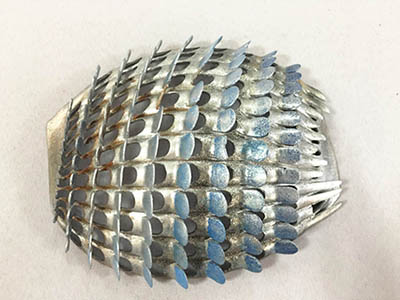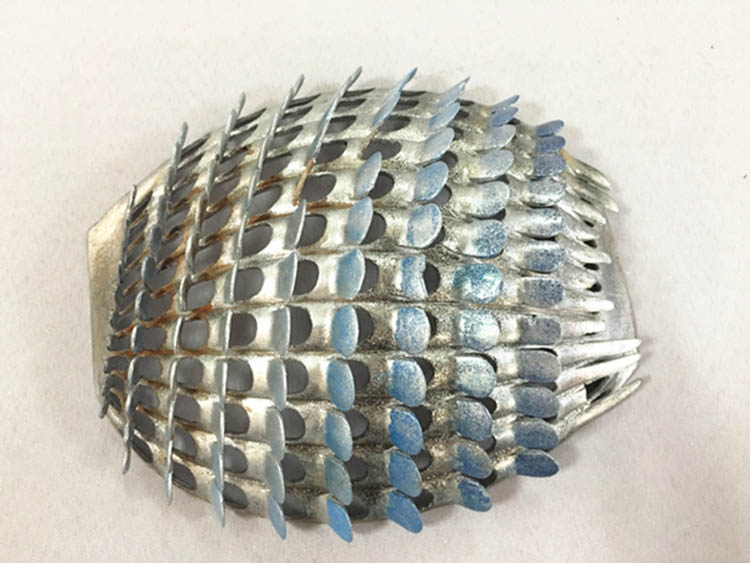Metal 3D printing technology propulsion design

With the increasing demand for 3D-printed metals, we feel the need to popularize the design of metal 3D-printing — there are still some misconceptions about metal 3D-printing, and manufacturers have intentionally or unintentionally exaggerated technological capabilities.
Before introducing the design rules of metal 3D printing, there is another problem that needs to be clarified. When talking about metal 3D printing production, it is not to replace the production of existing parts, which is one of the most common misunderstandings of the public. In most cases, metal 3D printing is not advantageous in the production of existing parts.Regardless of machining, casting, sheet metal and welding, traditional processes are very mature and can be multiplied by traditional processes to divide traditional components, whether cost or efficiency, metal 3D printing is not advantageous.Of course, if you just want to make a prototype, there are applications for metal 3D printing. The advantage is that it is fast and you can use the same materials as the final product. This is a more traditional application of metal 3D printing.
Metal 3D printing is to reduce the overall cost through the design of metal 3D printing.There are four major goals to be achieved through metal 3D printing:
Reduce the number of parts;To reduce weight;Reduce assembly;The production of highly complex parts, through this “three minus one high” to achieve the purpose of reducing the overall cost;
For example, General Aviation once launched a metal 3D printing design competition on the Internet. A part of the original aircraft weighs 2033g, and the public solicited 3D printing designs, which are required to meet the strength and assembly requirements. The lighter the better, and the lightest one wins.The competition attracted a lot of online participation, and one of the biggest benefits of 3D printing is its so-called freedom of design.
Most of the designs presented by the competitors met the original constraints, met the installation and strength requirements, and significantly reduced the weight. The winner weighed 327g, almost one tenth of the original weight, or 16% to be exact!This is a revolution in the gold-heavy aviation industry.Each one will reduce its weight by 17,06g, equivalent to reducing fuel costs by hundreds of thousands of tons each year and reducing carbon emissions by tens of thousands of tons;This is the comprehensive cost of 3D printing, not just the manufacturing cost, but considering the comprehensive effect, which is very obvious for the aviation industry with a strong demand for weight loss, with huge advantages.Not only the aviation industry, metal 3D printing can do the accompanying cooling mold, also has a similar comprehensive cost advantage, there is an opportunity to magic monkey in the development to tell you about.
Had finished the basic principles and important goal, let us talk some dry goods, is a 3 d printing design need some knowledge of the metal, the hope can give you in the design process to enlightenment, and these parameters may and manufacturers to don’t agree with each other,, mostly practice, for example, wall thickness, factory if can use 0.2, 0.2 but in practice may not be stable.In addition, different kinds of 3D printers may have different values, but basically they are not too different.
First of all, metal 3D printing, like other 3D printing, requires 3D digital files to meet the basic requirements of physicality, watertightness and so on. We have made a summary before. Those who are not familiar with metal 3D printing can move to the design specification of 3D printing and have a look at the basic design specification of 3D printing.
Let’s talk about the specific requirements of metal 3D printing:
1. Minimum details
The minimum detail feature is no less than 0.15mm, that is to say, features and details less than 0.15mm May be ignored and not displayed.For example, a 0.1 slot, although the minimum light spot can be less than 0.15mm, because the details are characteristic, characteristics may be ignored;
2. Minimum wall thickness
The minimum wall thickness can reach 0.2mm, but it is recommended not to be less than 0.5mm. The minimum wall thickness is also related to the structure of the article, as well as the height of the article and the ratio of the wall thickness. Generally speaking, this ratio should not exceed 40.
3. Surface finish
The roughness and smoothness of a surface are related to three factors:
A. Printing materials;
B. Construction parameters;
C. Parts placement direction;
In different printing situations, surface roughness, equipment, shape, placement, etc., all have an impact on the surface. Generally speaking, vertical surface is better than tilted surface, and tilted upper surface is better than lower surface.
4. Support structure
There has always been a legend in jianjiang that the use of powder 3D printing technology does not need support, which may be true for SLS plastic, but for metal 3D printing, support is needed, and in many cases is necessary.The main functions of metal 3D printing support are as follows:
A. Connect to the printing platform;
B. Keep the shape of the parts;
C. Prevent warping;
Metal 3 d printing, therefore, is likely to produce a large number of supporting structure, this creates two problems, one is that the extra cost, there’s a “secret”, we offer online support involved is the lowest price, there are a lot of directly calculate supports free, even for metal 3 d printing, this is a disadvantage for us, for the vast number of users is really good, perhaps this is the legendary “boss crazy”;The second is the additional process, mainly refers to support, sometimes support to make people doubt life, after all, this is metal support, not plastic support, polishing is also painful.So what do you do?Just put up with it?It shouldn’t. It should give 3D printing the freedom of design, and design parts with less support and better performance.
Equipment and materials may differ in the Angle at which the support is generated, and in most cases the powder alone will not be sufficient to support the tilt Angle.
5, dangling
The upper layer of the cross section is larger than the upper layer, creating a suspension.Metal 3D printing has a relatively low tolerance for suspension, and suspension greater than 0.5mm will cause problems.
The inner hole generally has self-supporting structure, which generally has little influence on the printing, which is very beneficial to the production of casual cooling mold.However, if the aperture is too large, it can cause problems.As shown in the figure, generally, if the aperture is less than 8mm, self-supporting effect can be achieved; if the aperture is larger than 8mm, suspension problem will occur.
6. Bridge structure
The allowable distance of the bridge structure is about 2mm, which is still relatively small.
7. Internal stress – warping
Internal stress is a problem that metal 3D printing has to face. When the cross section of printed objects changes greatly, it is easy to generate relatively large internal stress. In addition, large area of flat surface will also generate strong internal stress, which is very large and can pull the printing base out of shape or even cut bolts.This requires us in the design, to avoid the cross section suddenly from small to large, to gradually transition;Instead of using a large flat surface, think again: if you need a flat surface, why use 3D printing?
8. Other design skills
Metal 3D printing is very suitable for printing mesh-like structures. These mesh-like structures are suitable for internal support, which can not only reduce weight but also retain strength.
Take into account the removal of the support and powder after printing. Leave an entrance for the support and powder removal. The support cannot be permanently sealed inside after printing.
To sum up, metal 3D printing opens up new design options, liberates design freedom and makes more designs possible.However, metal 3D printing will not replace traditional manufacturing methods. Each has its own strengths and complement each other.Only by understanding the specifications of metal 3D printing can we maximize the benefits of metal 3D printing. We hope to help those who need metal 3D printing, which is also rozeem’s small wish.


